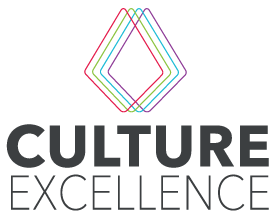Food safety costs money. The amount often surprises people! Meeting regulations and customer requirements is already a costly enterprise, so asking a company to spend more on top to measure food safety culture is not always an easy task for technical managers who realise this is a missing link in their food safety armour.
A new study published in the Journal of Food Science shows that simply developing a food safety plan in the meat and poultry industry in the US costs anywhere between 6,000 and 87,000 USD depending on the size of the company. Add to that implementation of HACCP plans, sampling plans, training of new employees, equipment, and audits, and the costs quickly run up to hundreds of thousands of dollars for lager corporations, and tens of thousands for smaller ones.
However, while these figures may seem high, food safety failures are infinitely more expensive. Just last month it was hard to escape the headlines in the US of a company in Arizona that had 6.5 million pounds of beef recalled after 57 people were taken ill.
A recall costs an estimated 10 million dollars in direct costs, not accounting for the possible damage done to brand, reputation and the subsequent loss of sales. In other words, these kinds of crises have the potential to bankrupt companies. Investing in food safety is thus not just a regulatory requirement, but also good business sense.
Yet worryingly, recent years show that food safety is increasingly becoming an issue for many companies. Between 2007 and 2012 the number of recalls increased four-fold. The reasons for this are varied. Every year, the food supply chain becomes increasingly more complex and global, providing new and often difficult challenges when it comes to safety and quality.
It is therefore now more paramount than ever to have the right systems for food safety and quality control in place. But the big question remains - how do companies who diligently comply with regulations know how effective they are? After all, outbreaks happen even in reputable companies who don’t spare expense on implementing food safety systems.
And this is where culture starts playing a crucial role. Producing safe food – always - must be the number one priority. For that to happen, companies need to know whether the money they’re spending to comply with regulations is having the desired effect and is promoting and embedding a culture of food safety excellence. Does every employee believe that before they make food, they have to make safe food, regardless of whether there is pressure from production targets or cost? Are they empowered, trained, communicated with and rewarded for working in the right way? Do company processes support them? Is the company proactive in food safety and is food safety a core part of its purpose?
One of our main priorities at Culture Excellence is to provide a food safety culture assessment that is cost effective and straight forward to implement, allowing businesses of all sizes to join our program. However, we still sometimes see managers facing difficult when explaining and asking for a budget for something new. With growing awareness of the importance of food safety culture, however, we hope that soon all food businesses will have a culture measurement tool in place and be able to spot and mitigate their cultural risks.
For Culture Excellence members:
In addition to focusing on the main strengths and weaknesses that emerge from the data, we also recommend checking your Hotspots view for pockets of risk. We also recommend looking thoroughly at your priorities view. Companies where employees perceive their personal priorities to clash with that of the organisation’s, as well as companies that put cost and speed above safety and quality, can experience serious safety and quality breaches when production targets are under pressure. If you would like to learn more, contact a member of our team: enquiries@culturexcellence.com

